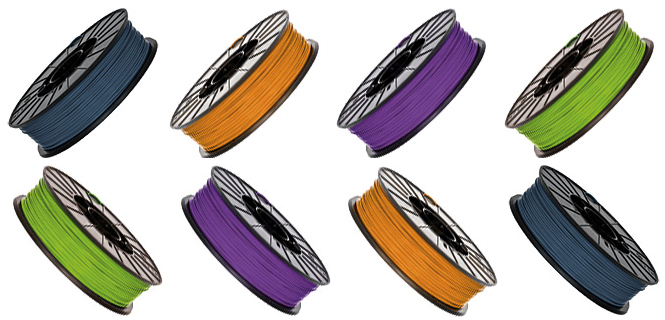3D printers are getting a lot of media attention lately due to the unique and innovative objects they are capable of producing and how it strikes the imagination of students and instructors. However, 3D printing has a long history dating back to the early 1980s. At that time, ABS (Acrylonitrile butadiene styrene) was the first 3D printing material developed.
Since then many new printing materials have been developed including PLA (Polyactic acid). Many have predicted that it’s only a matter of time before ABS is completely replaced by the cornstarch-based, biodegradable PLA material, but ABS still ranks among the most favorite 3D printing materials.
Let’s look at some common myths about ABS and PLA:
Myth: ABS is a stronger material than PLA
Fact: PLA is stronger than ABS
Because of its resistance to changes in temperatures, PLA is better suited, particularly for taller models. With ABS, you would have to use complicated and efficient cooling methods to maintain a constant temperature level when printing as changes in temperature tend to damage the model’s higher layers. Additionally, PLA does not have the tendency to curl, crack or break away from the print bed as ABS does. PLA is also resistant to organic solvents.
Bonus: PLA is biodegradable and does not release toxins.
Myth: ABS is a preferred material for post-processing
Fact: This is true
If post-processing is required, such as grinding, etching or polishing, ABS is the preferred material as it is more resistant to damage in post-processing, an additional step which is often needed for mechanical parts.
Myth: ABS is the best choice for engineers
Fact: Not true. There are many examples where PLA is a better option
Whether engineers are working on still or mechanical models, often the first step is to rapidly generate a prototype to verify and modify design ideas. For this, PLA is a better option. If a mechanical project, once the design is perfected and ready for production, ABS can be used.
A helpful guide from 3DHubs.com describes the various types of materials and their preferred use. An online guide from Make can provide additional pros and cons for each type of material.
Myth: Most 3D prints are mechanical designs
Fact: Most 3D prints are for rapid prototyping
Trend statistics from 3DHubs.com reports that prototyping remains the biggest print category – in fact 85% of professionals, defined as those who perform 3D printing as part of their job, use 3D printing for prototypes.
So is ABS or PLA better for rapid prototyping?
I believe that for rapid prototyping, ABS is unnecessarily complicated and PLA is a much more flexible alternative. PLA offers a much more predictable outcome whereas ABS is a little riskier. I have to scratch my head and wonder why ABS is still outselling PLA – perhaps it is because the initial wave of 3D printers only supported ABS and over time this will change.
But make no mistake, we turn to our larger 3D printer model the moment we need functioning parts or artistic models that require advanced post-processing.
Is there a middle ground? What about an easy to use, affordable desktop 3D printer that can support both PLA and ABS? The 3D printer industry is still in its infancy and we anticipate modern 3D printers to be able to support a variety of customer needs including materials and printer/print size.
David Miklas is the founder of Czech-based Be3D. Under David, Be3D developed and manufactured 3D printer technology and software to support the growing need for 3D innovation in Europe. In 2014, Be3D joined Y Soft, a global enterprise print management company and now Be3D printers are available around the world.
Subscribe to our Newsletter
3DPresso is a weekly newsletter that links to the most exciting global stories from the 3D printing and additive manufacturing industry.






















